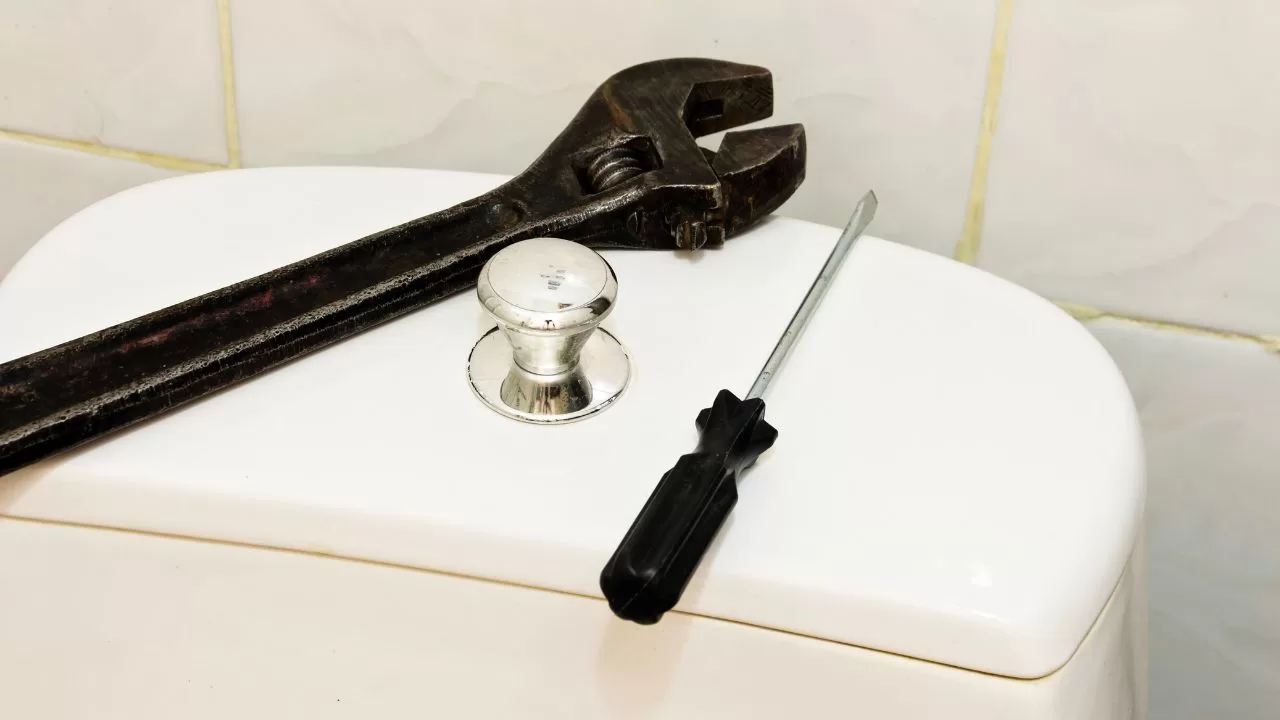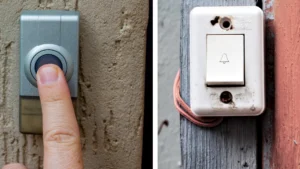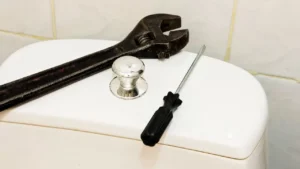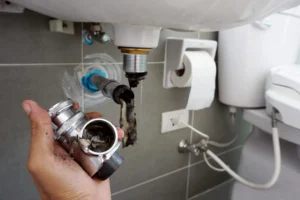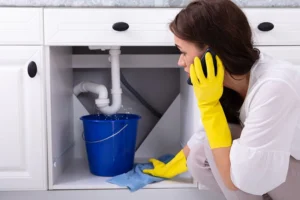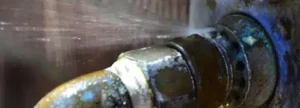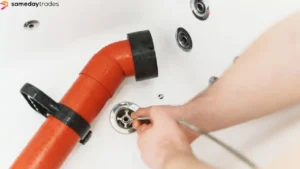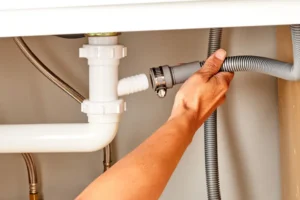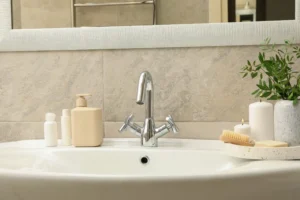A toilet that refuses to refill is more than an annoyance. It can leave the whole house waiting in line, waste liters of water, and hint at bigger plumbing issues hiding out of sight. The good news? Most causes are simple, cheap, and safe to repair if you know where to look. This guide walks you through every common reason a toilet cistern is not filling up, shows you how to test each part, and explains when professional help is the wiser move.
Quick Checks Before You Grab a Wrench
Start with the basics—these take two minutes and can solve the problem outright.
– Is the inlet tap fully open?
Many cisterns have a small chrome valve on the wall or floor. A half-turned tap starves the tank of water. Twist it anticlockwise until it stops.
– Lift the cistern lid and listen.
A healthy fill valve makes a steady, gentle hiss. Silence or a faint drip tells you water isn’t flowing right.
– Check for obvious obstructions.
Wipes, deodorizer blocks, or toys lodged under the float can pin it down and keep the valve shut.
– Turn off the water if you spot leaks.
Wet floor? Shut the inlet tap immediately. Fixing a leak is easier than fixing water damage.
If these quick checks don’t put things right, move on to a deeper diagnosis.
Why Your Toilet Tank Won’t Refill: Six Common Culprits
1. Faulty Inlet (Fill) Valve
The inlet valve is the slim tower on the cistern’s left side. Age, grit, or worn-out seals can slow it from a steady rush to a sad trickle. You’ll notice the tank takes five or ten minutes—or never finishes—after each flush.
Solution
Turn off the inlet tap, flush to empty the tank, and unscrew the valve. Replacement “quiet-fill” valves cost little and install in under ten minutes with basic pliers. Make sure the model you buy matches your water-supply size (½-inch is standard in Australia).
2. Stuck or Waterlogged Float
Modern floats slide up and down a vertical rod; older floats ride at the end of a metal arm. If the float fills with water or catches on the side wall, it can’t rise, so the valve never opens.
Solution
Gently lift the float. If it feels heavy or you hear sloshing, swap it for a new one. For floats that rub the cistern wall, bend the metal arm slightly outward or reposition the rod until it moves freely.
3. Debris Inside the Valve Seat
Rust flakes, sand, and scale often build up where the supply line meets the inlet valve. Even a grain of grit can block the tiny feed hole and cut flow to a drip.
Solution
Shut off the water, remove the valve cap, and pry out the black rubber washer. Rinse both parts under running tap water and use a toothbrush to scrub away residue. Before reassembling, briefly open the inlet tap to flush the line.
4. Household Water-Pressure Drop
If every tap in the house runs weak, the issue may be low mains pressure. Toilets rely on a minimum pressure to fill within two minutes.
Solution
Confirm pressure with a simple gauge on an outdoor tap. Readings below 25 psi often need a plumber’s attention. Installing a small booster pump—or cleaning a clogged pressure-reducing valve—usually fixes the problem.
5. Kinked Supply Hose or Partially Closed Stop Valve
Flexible hoses that feed the cistern can kink when a toilet is pushed back too far, and old stop valves may seize halfway.
Solution
Pull the toilet gently forward and inspect the hose. Replace any hose that shows sharp bends or corrosion with a braided stainless-steel alternative. Work a sticky stop valve back and forth while spraying silicone lubricant until it turns freely.
6. Overflow Tube Set Too Low or Constantly Running
If water surges straight into the bowl while the tank refills, the overflow tube might sit too low, or the float may be adjusted too high.
Solution
Shorten the refill level: for float-cup valves, pinch the adjustment clip and slide the cup down about 10 mm; for float-arm valves, turn the screw anticlockwise to lower the ball. Keep the final water line roughly one finger width below the overflow-tube top.
Step-by-Step Guide to Fix a Slow-Filling Toilet
– Isolate the Water Supply : Twist the inlet tap fully clockwise.
– Drain the Cistern : Flush once. Sponge out any remaining water into a bucket.
– Remove the Fill Valve : Use adjustable pliers to undo the nylon nut beneath the tank. Lift the valve free.
– Inspect and Clean : Check the sealing washer for tears. Rinse out grit. Don’t forget to clear the supply hose by letting a little water run into your bucket.
– Install the New Valve : Hand-tighten the nut, then give it an extra quarter turn with pliers—no more, or you might crack a porcelain tank.
– Adjust the Float Level : Set water to stop 25–30 mm below the overflow tube. This saves water and prevents constant drips.
– Restore Water and Test: Open the inlet tap slowly, listen for leaks, and time the fill. Anything longer than two minutes still needs work.
– Final Leak Check : Dry the base with tissue, then look for fresh moisture after two flushes.
In most homes, this process restores a smooth, quiet refill in under an hour.
How to Adjust Water Level in Any Toilet Cistern
Keeping the correct water line ensures a strong flush without wasting liters.
- Float-Cup Valves: Find the metal spring clip on the side of the cup. Squeeze and slide the cup up for more water and down for less. Release to lock.
- Float-Ball Arms: Turn the brass adjustment screw on top of the valve. Clockwise lifts the ball and raises the level; anticlockwise lowers it. Tiny turns—about one-eighth of a rotation—make a big difference.
- Dual-Flush Towers: These often include a blue or red slider on the body. Move it up to increase the full-flush volume or down for a lighter flush.
After every adjustment, flush twice to confirm the new setting sticks.
When the Toilet Bowl Fills Up and Then Slowly Drains
A bowl that rises toward the rim and then trickles away usually points to a partial blockage, not a faulty cistern. Common offenders:
- Foreign Objects: Toys, cotton buds, or too much tissue jam in the trap.
- Vent Pipe Blockage: Leaves or bird nests hinder airflow, causing slow draining.
- Mineral Buildup: Hard-water scale narrows the waste outlet.
Try a flange plunger first. If water still drops slowly, feed a 6 mm drain snake gently into the trap. For roof vents, a licensed plumber with safety gear is the safest option.
In-Wall Toilet Cistern Problems Explained
Hidden cisterns save space and look sleek, but repairs take special steps.
- Access is Limited: Check for a removable flush-plate panel; if none exists, tiles or plaster may need removing.
- Condensation Risks: Warm, moist air inside walls can lead to mold if insulation is poor.
- Specialist Parts: Flush valves and buttons often come from the original frame manufacturer, not standard plumbing shops.
If you can’t reach the internal gear through the flush plate, call a plumber who has frame-specific tools and spare seals.
Replace the Cistern Only or the Whole Suite?
Swap only the cistern when:
- The pan is crack-free and color-matched spares are available.
- Internal parts are obsolete but the porcelain tank itself is sturdy.
- You need a fast, budget-friendly fix before guests arrive.
Replace the entire toilet when:
- The pan shows hairline cracks or unpleasant staining you can’t clean.
- Bolt holes are corroded or leaking.
- You want to upgrade to a rimless, water-saving model that flushes better with less noise.
Modern close-coupled toilets often save 2–3 L per flush compared with 1990s designs, so the long-term water savings can pay for the upgrade.
Preventive Maintenance Tips to Keep Your Toilet Healthy
- Exercise the Inlet Tap: Turn it off and on every six months so it never seizes.
- Descale Annually: Pour one cup of white vinegar into the cistern, leave for an hour, then flush to cut mineral buildup.
- Replace Rubber Parts Every Five Years: Washers, seals, and flapper valves harden with age; swapping them early avoids emergencies.
- Teach Flushing Rules: Only the three Ps—pee, poo, and paper—go down the loo. Wipes and sanitary products belong in the bin.
- Check for Silent Leaks: Put a few drops of food coloring in the tank. If color appears in the bowl without flushing, you’ve got a leak.
A five-minute routine can save costly call-outs and lower your water bill.
Conclusion
A toilet cistern not filling up usually comes down to six key issues: a faulty inlet valve, a misbehaving float, debris, low pressure, a kinked hose, or an overflow set too high. With basic tools and this guide, most homeowners can restore a steady, quiet refill in under an hour. If you hear constant running, see leaks, or find the steps above don’t solve the problem, call a licensed plumber before small inconveniences turn into costly water damage.
Frequently Asked Questions
Why is my toilet not filling after flushing?
Typically, a clogged inlet valve or stuck float is blocking water. Clean or replace the valve assembly to restore flow.
Why does my toilet take twenty minutes to fill?
Low mains pressure or a half-closed stop valve starves the cistern. Check house pressure with a gauge and open the valve fully.
Can a push-button cistern suddenly stop filling?
Yes. Push rods can jam the valve open or shut. Remove the flush plate and ensure rods line up straight with the mechanism.
Why is my toilet tank not filling but water keeps running?
A warped flapper or flush seal allows water to leak straight into the bowl. Replace the seal and re-seat the flapper chain correctly.
What causes a cistern to overflow down the bowl?
Either the float is set too high or the inlet valve won’t shut off. Lower the float or fit a new valve.
How do I fix a toilet that won’t flush because the tank is empty?
Isolate water, inspect the fill valve for debris, and confirm the float moves freely. Replace worn parts as needed.
What’s the best way to adjust a toilet float?
Move in small increments—5 mm at a time—and always test-flush twice before finalizing.
Why is my toilet water not filling in drought-prone areas?
Regional pressure reductions can drop supply below the valve’s minimum. Install a small cistern inlet pump or talk to your water authority.
Is a slow-filling cistern a sign of low water pressure?
Often, yes. If taps also run weak, low pressure is likely. Ask a plumber about a booster pump or pressure-regulating valve adjustment.
How do I stop a cistern that won’t stop filling?
Turn off the inlet tap, flush to empty, then inspect the fill valve and float seal. Replace the valve if cleaning doesn’t cure it.

